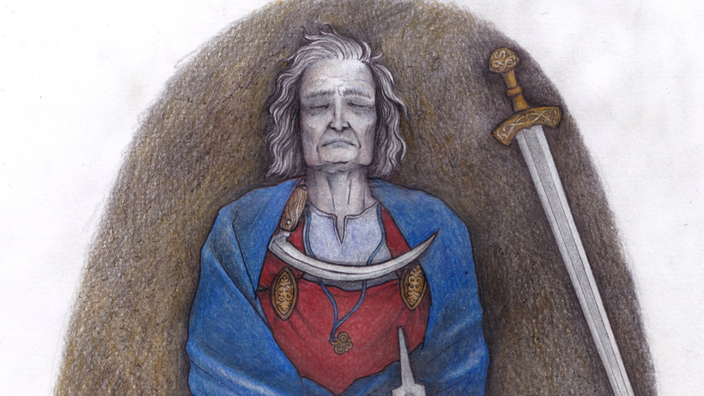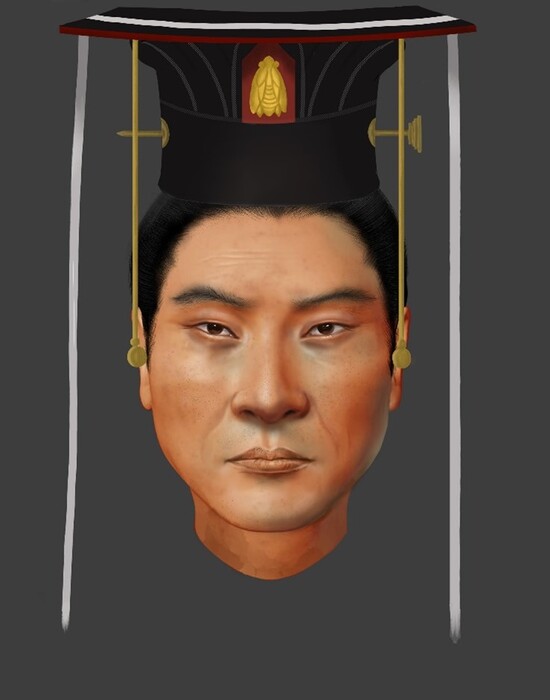This is a story of a different kind. After the mega-born Viking warrior of Birka and the prehistoric Peruvian hunters of Wilamaya Patjxa, the occupant of a Finnish princely tomb from the Middle Ages has in turn been reinterpreted in the light of a new investigation between anthropology and archeology. Discovered in 1969 in the Finnish town of Hattula, Suontaka Vesitorninmäki's burial place contained fabulous remains from the 11th-12th century: two quality swords, one of which had a magnificent bronze handle, a precious pair of brooches, jewelry and various other ornaments and valuables. Generally considered to be the grave of a high-ranking warrior, the burial place was the subject of a new study this summer which, based on a genetic analysis of theburied individual, came to an unexpected conclusion: he would thus be neither really a woman, nor quite a man, but a non-binary person.
Read also Galloway's Viking treasure may have belonged to Scottish monks
At the time of its discovery, the presence of both male and female objects had already seemed disturbing to Finnish archaeologists because of the presence, in the tomb, of one and only deceased. It was impossible for them to attribute to one or the other sex because of the few preserved bones, two very degraded fragments of a femur. The hypothesis of a second missing body not holding up, the precise study of the ornaments - and in particular of the two oval brooches found where the shoulders must have been - had made it possible to attribute the tomb to a woman, draped like the were the Finns of her time. However, according to a genetic analysis carried out in recent months, the individual did not have XX chromosomes, as one would expect, but XXY chromosomes,as presented by researchers from the universities of Helsinki, Turku and the Max-Planck Institute in a study published in the
European Journal of Archeology
.
The tomb of Suontaka Vesitorninmäki has provided archaeologists with many quality objects, including a very beautiful sword with an ornate bronze hilt (at A), a second sword without hilt (at B), as well as a pair of brooches. typical of women's clothing of the time (in C).
Finnish Heritage Agency
A prestigious burial place
"It seems likely that the individual had XXY male chromosomal aneuploidy (Klinefelter syndrome)"
, say the scientists in their study. Concerning biological men born with an additional X chromosome, Klinefelter syndrome is characterized in particular by delayed puberty, gynecomastia or even infertility. Symptoms which, from adolescence, would have dissociated the individual of Suontaka Vesitorninmäki from young men of his age. A plausible hypothesis, according to anthropologist Lisa Matisoo-Smith of New Zealand University of Otago. Asked by the American media
LiveScience
, the specialist said that, despite the persistence of a certain margin of error concerning DNA analyzes,
"The proposed interpretation that the individual had Klinefelter syndrome is reasonably well supported on the basis of these fragmentary data
.
"
Read also Did a woman reign over this ancient bronze palace from the El Argar period?
The individual buried between the 11th and 12th centuries at Suontaka Vesitorninmäki could thus have enjoyed an intermediate place among his family, outside the strict binary and traditional gender framework, and in particular outside the male role that one might have expected from him at birth.
“Gender roles are not necessarily personal choices but are shaped by society
, the researchers reminded in their study.
In early modern Finland, male roles sometimes depended on sexual ability, the ability to produce offspring. An infertile man, what an XXY individual was likely to be, could have lost his manhood in the eyes of society. "
Despite this scrambling of genres which could have been, at the time, a source of opprobrium, the luxury of the tomb tells that, on the contrary, at the time of his death in any case, the individual
"seems to have been a highly respected member of his community, ”
archaeologist Ulla Moilanen, who was behind the
European Journal of Archeology
study
,
told
The Guardian
.
A tolerance, at least partial, of the non-binarity could thus have been imaginable in southern Finland, in the 11th-12th century.
“Suontaka's burial could be seen as proof that non-binary gender identities could be granted significant value and visibility in northern European society in the early Middle Ages”
, argues the team of researchers, while admitting that the social and family status - indicated by the richness of the funeral furniture - of the person could have played a decisive role in his situation. The singular status of the person buried could finally have been symbolized in the choice of swords buried with them in the tomb. The best known, the one with a splendid bronze handle, had been placed above the tomb, in the layer of embankment. Only the second sword, without a handle, had been placed on the body. This weapon
"bears no traces of combat, and the hilt has been removed as if to render it unusable, or less violent and non-sexual if one sticks to the traditional reading of the symbolism of swords"
, observe the researchers. Peaceful or not, the non-binary aristocrat of Suontaka Vesitorninmäki nonetheless presents a profile of an astonishing kind.







